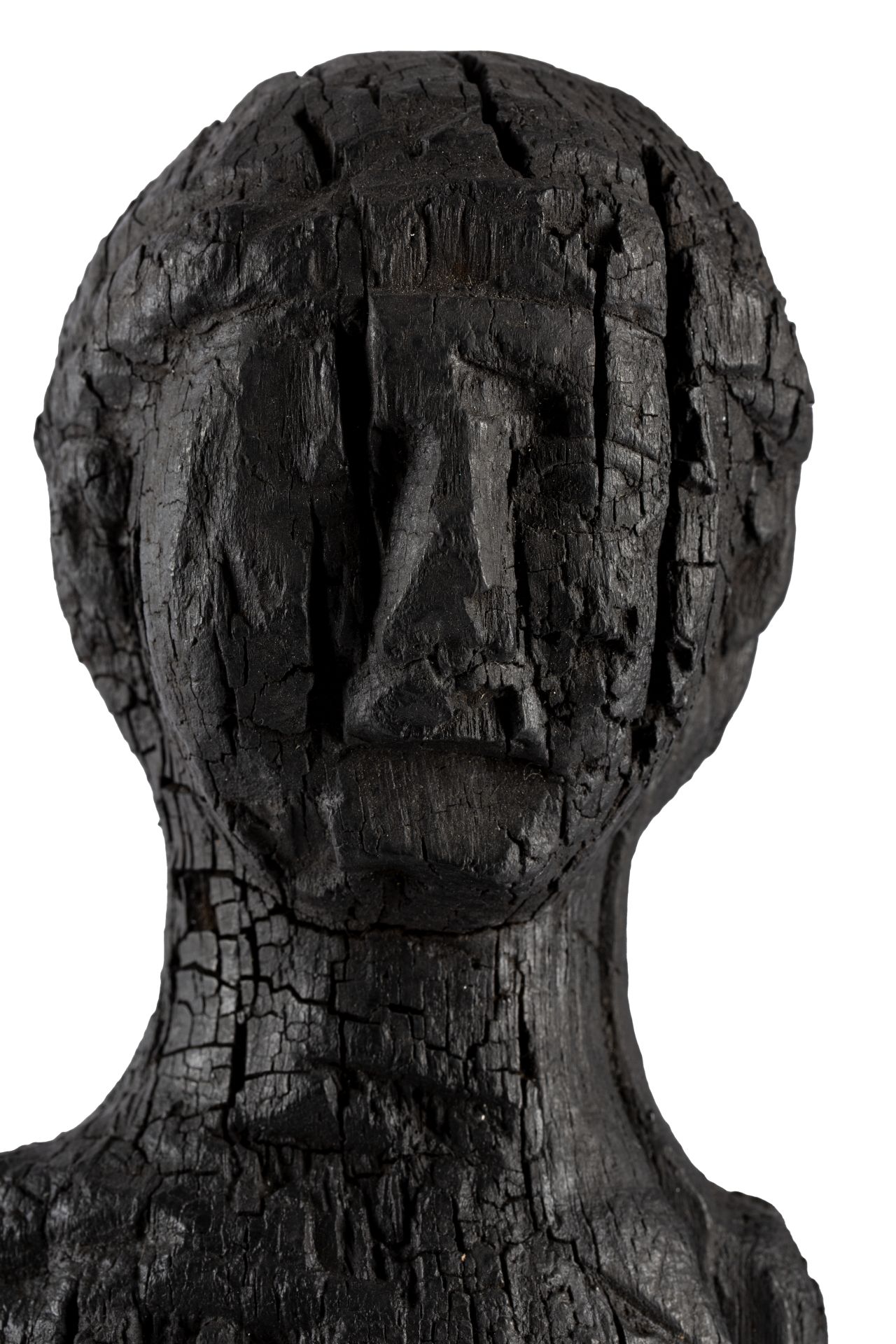A Destination
Ercolano was privileged to be covered by the eruption, the waves of cooled rock prohibiting would-be looters from tampering with the historic city. Similarly, the archaeological site benefited from being farther afield from Mussolini’s seat of power in Rome, evading the rushed digging that accompanied more localized ruins like the Coliseum and Tomb of Augustus. Today, the dig site stands as an archaeological park, open and inviting tourists from around the world who are savvy enough to seek it out. Its place as a piece of fascist propaganda has been ashed over in favor of shared scientific endeavors. The excavation and preservation of Ercolano is ongoing, illuminating the heartbreaking final moments of citizens stuck in a doomed sea-side town.


Statue/bust
Italy, statue, wood, charcoal, Ercolano
A bust of a figure, the bust was charred during the eruption of Mount Vesuvius.
Wood/slotted sculpture created by unknown artist, 20BC - 10AD
Measures 30cm tall, 13cm wide
Ministero Della Cultura: General Catalogue of Cultural Heritage, 1500011005
Available via CC-BY 4.0